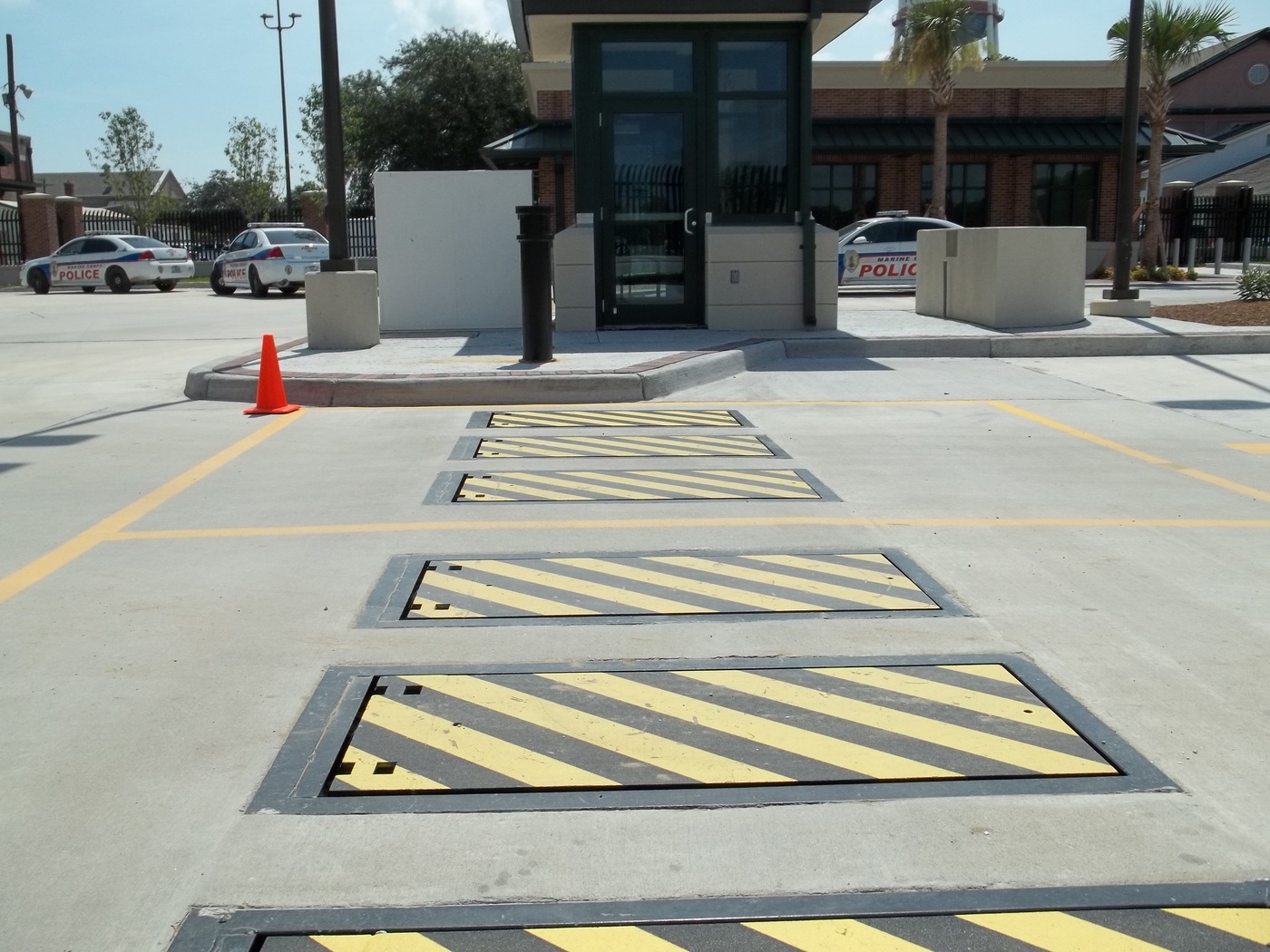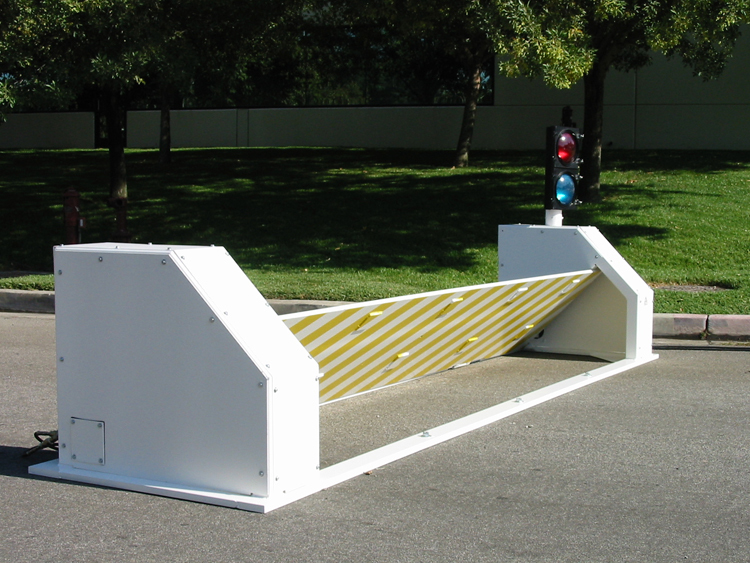More About Wedge Barriers
Table of ContentsThe Buzz on Wedge BarriersOur Wedge Barriers Diaries


18 may be done faster, easily, and price efficiently. FIG. In specific personifications, the support 30 may be a steel frame including plates, beams(e. g., I-beams ), and/or various other structures that are secured read here within the foundation 14, which may be concrete. At the surface 12, an upper side 28 of the anchor 30 may be at the very least partially revealed
, thus making it possible for the add-on of the obstacle 10 to the support 30. g., threaded openings)in one or more beams or plates of the support 30 might be exposed to the surface area 12. In this manner, screws 32 or various other mechanical bolts might be made use of to secure the barrier 10 to the support 30. As the barrier 10 is placed to the surface area 12 of the foundation 14, collection of debris and various other material underneath the obstacle may be lowered, and elements of the bather 10 may not be exposed to listed below quality atmospheres. As suggested by recommendation numeral 52, the training mechanism 50 consists of elements disposed underneath the wedge plate 16. For instance, the components 52 under the wedge plate 16 might include an electromechanical actuator, a webcam, several webcam surface areas, etc. In addition, the training device 50 consists of a spring assembly 54
The springtime pole 58 is coupled to a webcam(e. g., web cam check my site 80 received FIG. 4) of the training mechanism 50. The springs 60 disposed regarding the spring pole 58 are held in compression by spring sustains 62, consisting of a dealt with spring support 64. That is, the fixed springtime support 64 is repaired about the foundation 14 et cetera of the bather 10.
An Unbiased View of Wedge Barriers
The continuing to be force applied to
the cam to deploy release wedge plate 16 may be provided supplied an electromechanical actuator 84 or other actuator. The springtime setting up 54 and the actuator 84(e. Wedge Barriers. g., electromechanical actuator)might run with each other to convert the camera and lift the wedge plate 16.
As mentioned above, in the deployed position, the wedge plate 16 serves to block gain access to news or traveling beyond the obstacle 10. The barrier 10(e. g., the wedge plate 16 )may block pedestrians or vehicles from accessing a residential property or pathway. If a car is taking a trip in the direction of the released wedge plate 16(e. For instance, in one circumstance, the security legs 86 might be prolonged throughoutmaintenance of the barrier 10.